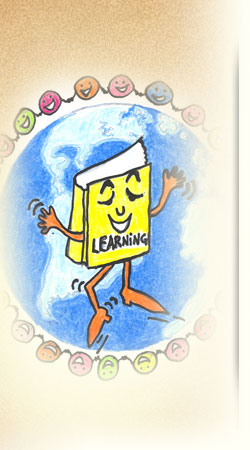My passion for literacy, education, languages and cultures of all regions of the world has fueled my desire to work internationally.

Reading Approaches
Reading programs are based on systematic phonics using multi-sensory strategies and approaches through direct, concept teaching. The sequence of concepts and skills progresses from the simplest to the most complex. The reading/decoding curriculum is basic explicit phonics starting with phonemic awareness, proceeding to sounds/symbol correspondence, syllabification, and ultimately context with attention to memory, accuracy, fluency and comprehension.

Orton-Gillingham is a highly structured, sequential multisensory, phonic-based approach to teaching reading and spelling. O.G. is intended primarily for use with children who have difficulty with reading, spelling and writing. Multisensory techniques are used to promote better retention as students are taught the phonetic codes of the language. This is much easier than having to memorize thousands of words by sight.
The 44 basic sounds and the letters that represent them are taught one at a time in building block fashion.
Daily drill on the sounds and plenty of word decoding practice will help them to master this foundation.
Children read material, with controlled vocabulary, that introduces the sounds in a good phonics sequence to avoid confusion. With the proper preparation, students continually have successful reading experiences.
O.G. Therapy: is integrative and direct, content covered: decoding letter sound relations
(using mnemonic letters), word analysis (six syllable types), word recognition (sight words), vocabulary (grammar), oral reading, reading comprehension, and spelling (generalizations and rules).
Key Features of O.G:
· Simultaneous, multisensory instruction for reinforcing the name, formation, and sound of letters:
vision, hearing, and touch simultaneously to promote higher retention.
· Teach phonics skills one at a time in building block fashion.
· Use a sequence that minimizes confusion (systematic).
· Teach decoding (reading) and encoding (spelling) skills using the 44 basic sounds of the English
language helping those who cannot memorize words by sight, and helping all students to read largerwords independently.
· Review DAILY the vowel, phonogram, and digraph sounds until mastered.
· Provide decodable stories with controlled vocabulary that builds on the skills taught to date---
eliminating the tendency to guess.
· Teach comprehension and language arts skills within the context of the stories (to give the skills
meaning and purpose).

Lively Letters is a highly dynamic phonemic awareness approach developed by Nancy Telian, a speech and language pathologist and reading specialist.
Lively Letters combines phonology and phonics to improve reading and spelling in English for all learners. Students learn to recognize phonemes (sounds), to read words efficiently and to spell words correctly.
You may be familiar with letter names/or sounds, but with Lively Letters we focus on how the sounds are made. Using a guided discovery approach we learn how the sounds are made and how to determine if our voices are on or off. The letters are directly embedded into pictures of lively characters that show what the mouth is doing when the sound is produced.
An engaging story and hand cue help the student to elicit the sound quickly. Students repeat the sounds and learn the oral kinesthetic features of the sound to help with correct pronunciation and to eliminate confusions. Our Lively Letters love to share their personalities and character!
Key Features of Lively Letters:
- Letter/sound associations– structured and explicit
- Rapid Naming of Letter Sounds –automatic naming of letter sounds with use of imagery and movement
- High Level Phonemic Awareness: Blending, Segmenting and Manipulating one syllable words in English.

Incorporating metagcognition in teaching is about thinking about “what we know” and “what we don’t know”. A metacognative environment encourages an awareness of thinking.
Our Metacognitve strategies like MIM and activities like the Word Web help students’ make connections and reflect upon their own learning about the “web of words” in their heads. We begin with the children’s prior knowledge about a word’s meaning by developing explicit elaboration and depth around “known” words.
We can never assume a child knows the meaning of a word, much less the fact it might mean several different things. Our fun strategy provides a visual mnemonic for children to store multiple meanings of words from the start. We explore the multiple meanings of “core” words in English with the use of fun word web activities. Students learn how to match multiple definitions to each core word.
Key Features of MIM Class:
- MIM tricks are quick, humorous mnemonics that teach key strategies about words.
- Word Web, a chart that provides a simple, visual way of illustrating how words are interconnected to improve comprehension and vocabulary skills.
